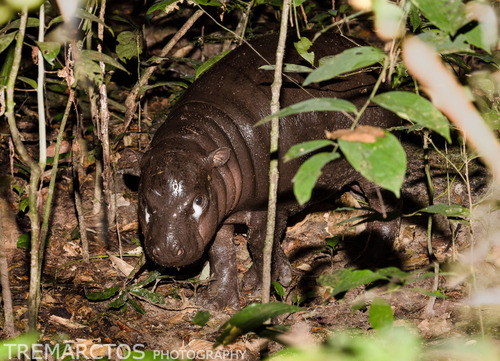
Pygmy Hippopotamus
The shy Pygmy Hippopotamus, Choeropsis liberiensis, inhabits West African forests. With a secretive, nocturnal nature, it forages for food under cover of darkness. Smaller and more land-oriented than its relatives, this elusive creature plays a crucial role in its ecosystem as a seed disperser.
30-40 years
Lifespan
160.0 - 270.0 kg
Weight
Length: 1.5 - 1.7 m
Size
Pink, Light, Grey, Dark
Color
4-5 years
Age of Sexual Maturity
8 months
Age of Weaning
18.6 mph
Top Speed
Endangered
Conservation Status
Decreasing
Population Trend
Characteristics
The Pygmy Hippopotamus (Choeropsis liberiensis) is a small, reclusive herbivore native to the forests and swamps of West Africa. This solitary creature is nocturnal, feeding on leaves, roots, and fruits. Unlike its larger cousin, the common hippo, it spends less time in water and has a more terrestrial lifestyle.
Distribution Range of the Pygmy Hippopotamus
Choeropsis liberiensis, commonly known as the pygmy hippopotamus, is native to the forests and swamps of West Africa, primarily found in Liberia, with smaller populations in neighboring countries such as Sierra Leone, Guinea, and Ivory Coast.
Pygmy Hippopotamus's Habitat
Environmental Conditions
The pygmy hippopotamus inhabits dense tropical forests and swamps, preferring areas with abundant water sources such as rivers, streams, and swamps. The climate in these regions is typically humid and tropical, with heavy rainfall, especially during the wet season.
Ecological Niche
Choeropsis liberiensis is adapted to a semi-aquatic lifestyle, spending much of its time in water to keep its skin moist and regulate body temperature. It plays a role in the ecosystem by feeding on vegetation, which helps to maintain the balance of plant growth in its habitat.
Copyright @ Nature Style Limited. All Rights Reserved.
 English
English